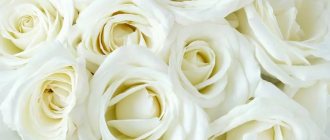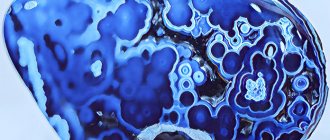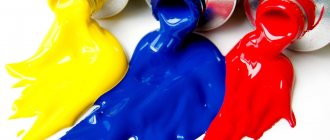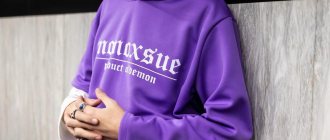Few people think that colors, just like circumstances, situations and people, can influence our mood, well-being and even behavior. Today we will talk about the effect that lilac and violet colors have on the human psyche.
In everyday life, not every person thinks about the fact that color can somehow influence his psyche and mood, however, in fact this is so. Each color has its own meaning and, accordingly, each color has a different effect on the psyche; in this article we will talk about purple and lilac.
Origins of color
In the color system, violet is considered a third-order color, between purple and blue. The etymology of its name has a long history. The Latin word "viola" is believed to have originated first. Later it was borrowed by French and German. In these languages, purple sounds like “violet”. The word "fioletowy" is a Polish version of the name, from which the Russian "violet" comes.
Most people associate this color with violet blossoms. It is classified as cool shades. Purple is the color of luxury, mysticism and nervous instability.
Until the 19th century, when synthetic dyes were invented, obtaining this shade was incredibly difficult. Artists of the Byzantine Empire made purple paint from the ink secretion of mollusks. A small jar of dye required about 250 thousand soft-bodied animals. The paint turned out to be very durable and rich. This shade was rightly called royal.
Symbolism
Johannes Itter wrote that dark purple is the color of disaster. But once it is illuminated, all the mystical horror turns into nobility and peace of mind. This color combines the masculine active and feminine passive principles. It simultaneously conceals depth and challenge, unity and conflict. Purple is a mixture of magical blue and hot red. This is the unity of two irreconcilable elements. Such a union can give either everything or nothing.
Purple is the harmony of opposites that have been reconciled. The cool blue tone calms the vibrant energy of red. Bright impulses of red awaken to life and dilute the dreary depth of blue. Thus, the components of violet color provide it with balance and poise.
Since ancient times, this color has been considered a symbol of everything mystical and inexplicable. In books you can often see magicians and wizards dressed in purple outfits. In religions, the symbolism of this shade belongs to the spiritual sphere. In the mythology of many countries, the color purple is represented by the wise owl. It is a source of secret knowledge, and in some cultures it symbolizes an ascetic lifestyle and repentance.
The color purple is also associated with spiritual rebirth, personality transformation, and the transition from one state to another. Moreover, such spiritual changes occur abruptly and free the soul from everything old and obsolete.
Purple is the color of creativity, but not ordinary, but beyond the limits of consciousness. Esotericists consider it not a human color, but rather an otherworldly one
In Buddhism, purple is the color of the seventh chakra, which is responsible for the highest level of spiritual consciousness. This energy center is located at the crown and symbolizes pure intuition, celestial knowledge and connection with the cosmos.
The ancient Egyptians associated this color with a particle of the soul that remained alive after death. This spiritual element was called the word “Ba” and was depicted in the form of a bird that served Osiris, the god of death.
In Christian mythology, the color violet is a symbol of sacrifice. In ancient Rome, women wore wreaths of violets as a sign of spiritual and physical purity, humility and abstinence.
What does the shade of violet symbolize?
Find out what awaits you today - Horoscope for today for all zodiac signs
Due to numerous requests from subscribers, we have prepared an accurate horoscope application for mobile phones. Forecasts will arrive for your zodiac sign every morning - it's impossible to miss! Download for free: Daily Horoscope 2020 (available on Android)
The human subconscious perceives the purple hue as something mysterious and otherworldly and associates it with mysticism, astrology, esotericism and healing. After all, if you look at a picture of a magician or witch, in most cases you will be able to notice that he or she is wearing purple clothes.
The violet hue traditionally symbolizes the other world, with which only a select few are allowed to contact. By the way, since ancient times, purple clothing has testified to the uniqueness of the person wearing it. For example, the shade of purple, which is constantly mentioned in ancient stories dedicated to kings and priests, is the closest to violet. Ordinary people were not allowed to use the described shade.
During the Middle Ages, it was the color of mourning, but it was also allowed to be used exclusively by representatives of the royal family. The association of the purple hue with noble sorrow has been preserved by the Orthodox Church. When the clergy fast, they dress in violet-colored robes.
It is traditionally believed that violet causes internal concentration, detachment from reality, necessary if a person wants to cleanse himself spiritually. In addition, the shade also means transformation - the change from one state to another. Here we can talk about pregnancy, and about death, and about deep internal changes.
An interesting nuance. If you often see a shade of violet in your night visions, then this portends dramatic changes in your life.
Significance in psychology
The influence of the color purple on the human psyche is ambiguous. Its “waters” cannot quench your thirst, but you can easily choke. This color is actively used in hypnosis and meditation. If you follow the technique of spiritual practices, purple helps speed up recovery, activate the self-healing program, normalize brain function, improve memory and concentration. It also develops imagination and has an analgesic effect.
In reasonable quantities, violet color can normalize blood pressure, relieve panic attacks, calm the nervous system, and improve the functioning of the cardiovascular system. But this is not a safe medicine. The dose must be clear and correctly selected.
For men
A man’s attraction to the color purple indicates wisdom and experience, as well as a special perception of the world. He is able to see and feel what others cannot. Perhaps he has psychic abilities that he himself is not aware of.
Representatives of the stronger sex who love purple are distinguished by such qualities as:
extraordinary worldview interest in everything mysterious and unexplored desire for deep self-knowledge isolation, taciturnity external coldness strong empathy desire to be useful to other people desire to comprehend higher spiritual matters
This is a classic description of a man who prefers the color purple. But there are exceptions to this rule. Sometimes a passion for purple speaks of a demonstrative nature, a desire to attract the attention of women.
For women
For the fair sex, the purple hue has a completely different meaning. His lovers usually have a strong inner core, but outwardly they may not show any strength of character. They are used to living by the rules that they came up with themselves. These women are individualists who do not tolerate moral pressure.
Psychologists characterize lovers of this color as follows:
value inner freedom love unusual creativity communicate only with those who share their views in relationships “are not exchanged for small coins” have an emotional nature are very vulnerable and sensitive have a keen sense of the souls of other people
Most of those girls who are crazy about the color purple do not know how to dissemble or pretend at all. They don’t know how to hide their emotions, and they don’t see anything wrong with their sincerity.
Purple is considered a feminine color because it carries the energy of emotions and the subconscious.
For children and teenagers
Kids who like purple have a bright and rich imagination. Perhaps these are future artists, writers or designers. Often such children have artistic behavior and try to express themselves as individuals.
It is worth noting that the influence of purple on children, as well as on adults, is quite controversial. This color simultaneously denotes the depth of the soul and demonstrative pride, mysticism and sacrifice, abstinence and craving for vices. Therefore, children who love this color may be tormented by an internal struggle.
Children who are fond of purple things usually have the following psycho-portraits:
they are easily suggestible, but can easily influence others; constant contradictions in feelings and desires bring them discomfort; they are in dire need of encouragement and support; they can often express their feelings and interests in the form of an exciting game; they have strong intuition.
LiveInternetLiveInternet
Purple is undoubtedly considered one of the most mysterious and enigmatic colors.
It is this color that is covered in many tales and legends; it is in purple clothes that all magicians and wizards dress. What does the color purple mean in real life? Is he really that unusual?
Symbolism of purple
The main symbol of the color purple in psychology is the owl, since it is the color purple that symbolizes wisdom and mysticism.
For example, in medieval myths the color purple has the meaning of repentance. But in many religions, as in Catholicism, this color is a symbol of abstinence, which is why all cardinals wear rings with purple amethyst. When consecrated to the rank of cardinal, the initiate was given a ring with an amethyst, therefore in Catholic countries this stone was called episcopal, and in Rus' episcopal. There are extremely few purple stones, but one of its brightest representatives is the lovely amethyst of various purple shades, which deserves great attention and admiration for its beauty, properties and color.
In general, the color purple itself symbolizes joy, tranquility, dignity, modesty and the power of creation. Even in these concepts there is a struggle between red and blue.
In European heraldry, the color purple indicated membership in the royal family. But in the ancient Chinese science of environmental harmonization, it was considered unnatural and, therefore, unfavorable, since it represented two opposing elements - fire and water, and therefore was perceived by the Chinese as a symbol of conflict, anxiety and uncertainty.
The meaning of purple
The color purple is the result of the fusion of red and blue. In fact, this color is a symbiosis of two colors that are completely opposite in their effect. The strength and energy of red is intertwined with the calmness and intelligence of blue, which cannot but affect the final result. Red is considered a strong, passionate, stormy, rebellious color, while blue is considered the color of calm, prudence, silence and thoughtfulness. There are so many contradictions at once. Therefore, the person who chose this shade is unlikely to be constant in his opinion; most likely he will be a creative person who will perceive every single moment in his life on a different emotional level.
Anyone who prefers this color is very vulnerable and sensitive. He is inclined to dream, to live in his own world, with his own joys and sorrows, according to his own rules and principles. Such people have powerful intuition from birth, so they often do not try to take a high position at work, but strive more to help people in positions, becoming their advisers and so-called right hand.
Often, lovers of the color purple believe in otherworldly forces, in magic, and some even secretly want to be able to use this mystical energy a little. And there are those who simply want to be bewitched or enchanted by something. Here you have again the contradiction and confrontation between the power of red and the submission or calmness of blue. Although, in a person where these colors are harmoniously combined, great potential is revealed for everything, no matter what he does, no matter what he encounters along the way.
The value of each shade of purple will fluctuate depending on the dominant color. If there is more blue in the creation of purple, then the result is dark purple, which is a clear manifestation of authority and rudeness. But lilac or light purple color can even calm people with severe neurosis.
Characteristics of purple color
The color violet has a positive influence in the development of global plans, great ideas, and promotes the development of sensitivity. In psychology, the color violet is considered a source of artistry; it can have a soft, barely noticeable calming effect.
In addition, this color is strongly associated with intuition; in such cases, the line between reality and mysticism is truly blurred. Purple color helps people suffering from astheno-neurotic syndrome, vegetative-vascular dystonia, as it can calm down during sudden attacks of panic and anxiety. Also, if you like the color purple and are nearsighted, looking at this color continuously for a few minutes a day can improve your vision.
The psychology of purple helps in finding inspiration and sensitivity. Those who consciously strive for the color purple want to charm members of the opposite sex.
The negative influence of the color purple in psychology includes excessive control of feelings, as well as extreme pedantry. What does purple mean if it contains more red? In this case, vanity and some immaturity are possible, one might even say infantilism. Most often it is chosen by teenagers who have not yet found themselves in life.
Lovers of purple
Purple is considered the official color of feminism, and it is also the color of idealism, which contributes to an immediate increase in self-esteem.
It must be said that the color purple increases sentimentality, in psychology it is called putting sensitivity on the extreme edge, which is why homosexuals choose this color.
Lovers of the color purple are unusual, creative, extraordinary people; they strive for freedom, independence and space. Their life is a complete surprise, surprise. This is not a flat road, but a crazy mountain serpentine, this is not a straight line, but a crazy zigzag. Anyone who loves the color purple may seem “sleeping,” but in his soul he strives to fly, dreams of wings to fly as high as possible. He loves intellectual communication, and, by the way, he often lacks it! Lovers of the color purple often have remarkable intelligence. They are intelligent not because they sit for a long time in front of textbooks. They are smart by nature, and their subtle mind usually causes discomfort in the people around them; they consider themselves next to purple lovers to be uneducated and people of lower quality. Therefore, purple lovers try to communicate with their own kind, with people of the same circle.
“Violet” personalities are mysterious, have a creative mind and quickly perceive sublime ideas. The color purple is often favored by artists, as well as people who feel that they stand out from the monotony of the crowd around them. If this is your color, you are most likely generous and charming.
Purple is often associated with observation, receptivity, vanity and changeability. Because purple is a combination of red and blue, which are perceived as opposites, your character is characterized by a combination of contradictory traits, and you constantly try to balance these opposites - the excitement of red and the calmness of blue
Purple has three common shades, which psychologists also assessed. For example, those who choose to wear or look at the color dark purple are quite rude and domineering. Lovers of lilac can look at this color and calm down and even relax. And vanity is inherent in those who prefer a lilac shade.
Those who love purple are easy to talk to and unobtrusive, but no matter how long and openly you talk with your friend, a fan of purple, after the conversation you will certainly have the feeling that he did not tell you something.
Such people are also distinguished by great sensitivity, the ability to subtly determine and distinguish the slightest fluctuation in the mood of the interlocutor. This subtle feature is often called intuition.
However, many psychologists argue that it is precisely this subtle perception of the world, sensitivity to everything that increases suggestibility in a person, it is easier to convince him of something, it is easier to persuade him, and his opinion or decision can be influenced. Linking color preference to a person's level of education, they suggested that low-level people are more likely to choose the color purple, both in clothing and in interior design. But highly educated people belonging to the upper stratum of the population often bypass this color and are very skeptical about it. And people who are poorly versed in something or do not understand something are very easy to manage, it is increasingly easier for them to impose their opinion, to lead them.
If you don’t like the color purple, then you are a materialist, you are used to justifying your views on life, you value stability, clarity, and symmetry. They are straightforward and open in communication, and apparently do not like people who are arrogant, unnaturally refined, or judge things superficially.
In America and Central Europe, the color purple is rejected as unpleasant in tests, especially by intellectuals and artists. In contrast, out of 1,000 Asians, 450 named purple as their top two favorite color. Ethnological scientific expeditions that conducted surveys among the Indians of central Brazil and among the blacks of Africa, untouched by cultural influence, found that purple was the most favorite color there. The same was established among the peoples of the Middle and Far East, where sensual excitability is much more clearly expressed.
Color therapy
Color therapists believe that this color can not only calm overly excitable people, but also influence their health and well-being. For example, keep the lymphatic system and spleen in good shape, reduce the pulse rate, as well as relieve pain, stimulate brain function and cope with some forms of protracted neurosis.
Purple color has a tonic effect on the brain and eyes, promotes the production of joy hormones (endorphins), melatonin.
Supports the immune system and calms frayed nerves. Useful for tired and painful eyes, as well as for emotionally unstable people. Organs affected by violet color: nerves, glands, especially the pituitary gland, lymphatic system.
In color therapy, the color violet is:
- Reduces pain;
- Very useful for any internal inflammation;
- Also good for sciatica;
- Reduces skin rashes;
- Reduces heartbeat;
- Helps with any disorders that are associated with the head (for example, with a concussion)
- It has a beneficial effect on a person during a busy life, with insomnia, migraines and depression;
- Rejuvenates;
- Increases creativity and immunity.
But it must be used carefully. It sharpens vision and senses, but suppresses appetite. Too much of it can cause depression
A diet of purple foods (black grapes, olives, blueberries, plums, blueberries, black currants, etc.) is prescribed for problems with the nervous system, since the substances contained in them stabilize the mental activity of the body, calm and help in stressful situations and for bladder diseases. Purple color in clothes
You need to be careful when choosing clothes of this color in your wardrobe. Even though this shade is present in the rainbow that nature itself created, it is, nevertheless, very rare, so its abundance may seem too pretentious and unnatural.
Almost all children love this color before puberty. Therefore, it is possible that those who prefer this shade are slightly infantile. They are suggestible and constantly need support and support from family or loved ones. But at the same time, this color can increase the self-esteem of the one who chose it. Here's another confrontation between red and blue.
Since purple is generally considered a heavy color in psychology, young children are not advised to buy things of this color, as it can lower their heart rate. It is recommended to be worn by pregnant women, as this color is both a mystery and hidden sensuality.
Decorators advise diluting the purple color in the interior with any shades of yellow, gold or orange. And don’t get carried away with too dark shades of purple. The room will be much larger and brighter if the walls are light lilac or pale purple.
Everything is purple for me!
And the word “purple” was at one time very popular in the speech of young people. One could often hear: “Everything is purple to me,” “Yes, he’s kind of purple about everything,” which meant indifference to something. Psychologists also made comments here; they began to unanimously assert that the color purple is preferred by self-sufficient individuals, which allows them at a certain moment to move away from the current situation. A person concentrates attention on his inner world, and everything else is violet to him.
Purple people are considered easy to live with, but difficult to truly get to know. You can be secretive, so even in those moments when you reveal your soul, your closest friends may not always fully understand you.
Psychologists believe that no one is indifferent to the color purple - they either love it or hate it, but it certainly evokes emotions in a person. People who don't like this color lack sincerity and honesty. They prefer to engage only in those things and activities in which they are well versed or even consider themselves professionals. And lovers of the color purple are very fair and honest, and expect the same from their friends and loved ones.
Each color and shade is unique in its essence, so you need, of course, to start from what it means in psychology, but focus more on yourself, on your feelings. Pass the color through yourself, listen to yourself, and then you will understand what benefits it has for you. Based on materials from kak-bog.ru, sunhi.ru
Meditation
If you have lost your inspiration or it seems to you that life has lost all meaning, do meditation with the color purple. It helps develop mental and creative abilities.
Make yourself comfortable. Get in the mood for the color purple, you can use the photos below or just imagine something purple. Imagine a transparent soap bubble and fill it with violet energy in the form of light... Enter this bubble, raise your hands up, expand your bubble, stroke it from the inside. Now look at how myriads of stars are reflected on your soap bubble, look and feel the depth of space, be filled with its energy. Realize and feel your connection with him. Feel its depth, spaciousness, grandeur and tranquility. Feel how your body feels soft, pleasant waves coming from it. See and feel how waves of happiness fill you, your room, your country, the entire planet and universe. These waves are reflected many times and return to you, accept them, resonate with them. Be happy and the whole world will be happy with you.
Violet has the highest vibration of all the colors in the spectrum and therefore affects the highest expression of the human mind. It is the color of mysticism and, together with blue, helps develop clairvoyance and psychic abilities. The color violet is useful for people with creative and sensitive abilities, since it is precisely such people who easily tune in to the vibrations of this color.
.
The color purple brings peace, combining strength and softness. If you feel lonely or disconnected from life, imagine the color purple - it will protect you
See also:
The color of underwear is a mirror of a woman’s sexuality
Color combination: Color wheel
Variations on the theme "little black dress"
Negative effects of color
Violet is a very energetically strong color, so it is easy to overload the psyche. Psychologists consider it somewhat difficult, so you need to approach violet color therapy with extreme caution.
Purple is known to suppress appetite. It can be useful for overweight people, but thin people should not get carried away with it. Violet in excess reduces the ability to think rationally, causes overexcitation and irritation.
Purple is the color of the chosen ones; one cannot remain indifferent to it. Almost all people react strongly to this color. Some people adore it, others hate it, but it’s difficult to be neutral about this color. A rich, dark shade of purple can have a very bad effect on an unstable psyche. But light lilac shades act more softly.
Experts do not recommend getting carried away by purple people with a phlegmatic temperament. It is also better for melancholic people to avoid it. Constantly surrounding oneself with violet, a person becomes withdrawn and silent, gets carried away by mystical practices and withdraws from reality.
Shades of purple
The color purple has many unusual shades. There are 196 of them in the Panton palette. Here are the main ones:
Amethyst
It has a pink undertone, so it is characterized as warmer and more pleasant. Denotes fantasy, tenderness, dreaminess.
Eggplant
Has an admixture of black. Deep and rich, but can be light and dark. A darker eggplant emphasizes depth, while a lighter one can look flashy and vulgar.
Indigo
A mixture of dark blue and dark purple. A mystical and calm color that is associated with wisdom and balance.
Lavender
This is a light shade of lilac with a hint of gray. It looks very gentle and fresh, evokes positive emotions.
Purple
Elegant and ceremonial color. Combines blue and pink shades. Gives a feeling of celebration and well-being.
Combination with other colors
If we are talking about light shades of purple, then they look better in low-contrast compositions. Darker and deeper shades take advantage of combinations with other rich colors. Bright purple color suppresses all other colors, so the best option would be a combination of its moderate shade and other muted tones.
Purple and pink
A mysterious and juicy combination, it is not intrusive. A cool shade of moderate pink seems to be a continuation of the purple tone. The richer the pink color, the more the depth of the purple is emphasized, and the lighter it is, the clearer its contours become against the background of the main color.
Purple and red
Red color is one of the integral components of purple, so this combination is both contrasting and complementary. This is a sensual and exciting color union, enveloping the consciousness with unusual and mysterious images.
Purple and burgundy
This is a calmer, but no less deep and effective combination. Noble crimson shades softly set off the main color. Cherry, wine and ruby tones also look good in combination with a moderately saturated purple color.
Purple and orange
This combination cannot be called harmonious, because the proximity of these colors looks defiant and catchy. The strong contrast of warm and cold tones creates tension. But if in general these colors create a contradictory impression, then in the case of individual combinations you can get a very interesting and successful combination. For example, eggplant color harmonizes perfectly with coral and peach shades.
If you like the color lilac: what does it mean?
Personality formation takes place surrounded by colors. The emergence of various associations, mental characteristics and temperament influence the development of certain color preferences. This is what love for purple indicates:
- Creativity, the desire to create. Such people are interested in art. They immerse themselves in their hobbies, abstracting themselves from the outside world. These are creators and researchers.
- Rich fantasy. Lovers of purple are true generators of ideas. They willingly dream and plunge into serious, deep thoughts.
- Closedness. It is difficult for others to attract attention and arouse interest among those who prefer purple shades, since most of them are introverts. They are tired of a long stay in the company, they are wary of friendship and keep close only those who have been tested by time.
- High degree of sensitivity. Such individuals are easy to hook and offend, they have a hard time experiencing stressful situations, and often suffer from low self-esteem and inferiority complexes.
- Highly developed empathy. People who prefer a solitary lifestyle are well aware of the emotional state of others, know how to sympathize and are always open to requests for help.
- Eccentricity. This trait is especially noticeable at a young age, when a person strives to find his place in society and is on the path to developing a value system.
- Happiness comes from touching beauty. Lovers of lilac surround themselves with attractive things, they have delicate taste, and take care of their appearance.
I distinguish three main shades of lilac based on the predominance of cold and warm tones:
- Violet with a dominance of blue is loved by powerful people who find it difficult to get along in a team.
- The prevalence of red is preferred by romantic, sentimental individuals; light purple with a medium combination of heat and cold is chosen by trusting natures who are strongly attached to places and others.
Lovers of purple
Psychologists characterize lovers of this unusual color as extraordinary, creative and freedom-loving people. Their life is full of surprises and surprises. Their life path resembles an attraction. They only dream of peace.
Most purple lovers are sociable individuals. Sometimes they need pauses in activity, during which they seem to hibernate. But this is the “calm before the storm”, a rest before new achievements.
A person who likes the color purple is quite sociable, but he is only interested in conversations on philosophical and mystical topics. He may seem like an eccentric to those around him, so, as a rule, such individuals are looking for their own circle of friends.
Only “select” people, endowed with amazing intuition and the ability to understand inexplicable things, can experience a strong craving for purple shades
These people are “not of this world”; they are very smart by nature. They don't have to spend hours reading books to gain valuable knowledge. It’s as if the cosmos itself sends them heavenly wisdom, and they only pass it on to other people.
Often, purple lovers are interested in magic, esotericism, and paranormal phenomena. They are fearless and strong in spirit, but are often deprived of health. This is a kind of payment for high intelligence and superpowers.
Men
Intellectuals with a keen eye for observation. In life they notice more negative things, that is, they think in a pessimistic way. They are kind, understanding, but do not like to give advice, because they believe that a person should be responsible for himself and decide what to do. They love independence in everything, so they set the rules by which they live themselves. Men who prefer purple are aesthetes by nature. Although they may come across as vain and arrogant, they usually are not. They rarely say what they think, but their facial expressions reveal their true thoughts.
Use in clothing
Violet shades in the wardrobe are preferred by extraordinary and courageous people, most often women. Things of this color are worn by girls who strive to be original. Purple is truly capable of creating a unique and memorable image, but only a person with good taste can combine it correctly with other colors.
It's easy to overdo it with purple, so it's better to have one or two things of this shade. This could be a light lilac blouse or a summer dress. If we are talking about evening wear, then dresses in rich purple shades will look luxurious and advantageous. But it is worth noting that such an outfit requires an almost perfect image. Hairstyle, makeup, shoes - everything should be on point.
Bright shades of purple suit hot brunettes, but girls with blond hair need to be careful with them. For blondes, clothes in a pale lilac shade are suitable. If we are talking about a purple headdress or scarf, then in this case it is also worth paying attention to gentle and restrained tones.
Women
Women who love the color purple are dreamy and ephemeral; it’s never boring with them. They live in their own reality, understandable only to them, and are guided by their own principles and rules. Moreover, such people never break the law and are very conservative. They do not strive for power, but since they have developed intuition, they are often useful in distributing advice to the person “at the helm.” They are prone to mood swings, going from one extreme to another, from panic to euphoria. They are vulnerable, sensitive and emotional, although outwardly they try not to show their vulnerability. Such women need the patronage and protection of a “strong shoulder.”
Purple color in the interior
Purple color can be used in the interior of an apartment or office, but you should use light and delicate shades so as not to create an oppressive and heavy atmosphere. Purple in the interior goes well with white and gray. You can add a brighter color - light green, purple or orange.
Purple accents in the room help develop creative imagination and focus on studies. They calm hyperactive individuals and stimulate passive ones. This color will be appropriate in the offices of creative people who need constant inspiration.
Muted hues of wine, eggplant and plum in the kitchen distract attention from clutter, they are practical and stylish. In addition, purple tones help you lose weight because they suppress excess appetite.
In the living room, purple shades are very appropriate, provided that the room is well lit. They provide an atmosphere of solemnity and look majestic, especially in combination with accessories made of gold, silver and crystal.
As for the bedroom, here you can put furniture with purple elements in colors. The walls can be light lilac, plain or with a small pattern. In the bedroom there should be purple shades in moderation, especially if it is a children's room. It is best to use two or three small interior items, for example, a painting, a rug by the bed, or an ottoman.
In the interior, purple is best combined with white, black, gray, burgundy and lilac. In general, it is advisable that there be no more than two or three flowers.
Purple color will add spice to the bathroom. It will lift your spirits in the morning and relieve stress in the evening. You can use tiles with a purple pattern and frame the mirror area with purple. Thus, purple will distract attention from tired and ugly images.
Use in advertising
The color purple is not often used for advertising purposes. On the one hand, it brings concentration and harmony, and on the other, disunity and internal struggle. It also stimulates creativity, makes you delve deeper into yourself, and realize your true desires.
Marketers use this color to promote products that have just entered the market. These can be new products made with a creative approach, as well as various products for creativity. Most often, several purple elements are used in advertisements to unobtrusively place the right accents.
Purple evokes mixed feelings because it combines the feminine and masculine. Experienced advertisers use it to influence people who want to challenge society, change radically, and start life from scratch. The greatest effect is achieved with a combination of purple and bright yellow.
Purple helps you escape from reality, relax, and immerse yourself in the world of dreams and fantasies. Therefore, this color is suitable for decorating sweets, alcoholic beverages, perfume, and toys.
For children
More often, purple has a depressing effect on the child’s psyche. This is the color of children who are insecure and poorly adapt to new living conditions. If violet shades predominate in a child’s drawings, then this is an alarming sign for parents. The purple color speaks of the child’s possible hidden depression, a desire to escape reality into his own imaginary world.
It should be remembered that a child’s nervous system is formed before the age of 5; young children simply like bright colors, including purple. Therefore, it is too early to draw conclusions about the mental health of children under 5 years old based on the drawings.
Health effects
As already mentioned, the effect of this color on health is not clear. It all depends on the individual characteristics of each organism. According to scientists, the area of influence of violet is the pineal gland, located in the diencephalon. This is where all the “mental” signals come from, so purple is heavy and should be used with caution.
An excess of this color can cause depression and depression. The appropriateness of treating children with this color is questionable. But a moderate amount of purple stimulates brain function, normalizes the lymphatic system, improves the functioning of the spleen and parathyroid glands. This color has also been proven to be effective in combating migraines as it acts as a pain reliever. Purple can enhance the effect of anesthetics and narcotics.
What influence does
Can influence the strengthening of intuition
Let's look at the impact purple things and objects can have.
- Helps in the presence of astheno-neurotic syndrome.
- Helps calm anxiety and panic attacks.
- It has a positive effect on people with vegetative-vascular dystonia.
- It is believed that you can improve your vision in myopia by looking at purple objects for several minutes without interrupting your gaze.
- It is believed to increase self-esteem.
- Helps establish contact with the human subconscious. A person more often comes to insight, he has the ability to hear his inner world, his needs.
- It allows you to strengthen your intuition, promotes greater attentiveness, and allows you to notice the smallest details.
- It helps to enhance suggestibility, which is why it is often used by a hypnologist during hypnosis. Do not forget that this same property can be used by charlatans. When this color is in excess, it helps to lull a person’s vigilance, and he begins to feel sleepy.
- Allows you to improve memory, awaken past memories that have long been suppressed in the subconscious.
- This color can induce a deep trance state. It is for this purpose that it is recommended to use it for relaxation, after there has been a severe shock or stressful situations.
- Helps reduce blood pressure.
- From an esoteric point of view, purple helps protect mother and baby during pregnancy.
- This color helps to get away from everyday problems.
- It is worth considering the negative effect of this color - excessive control over your feelings, an extreme degree of pedantry.











